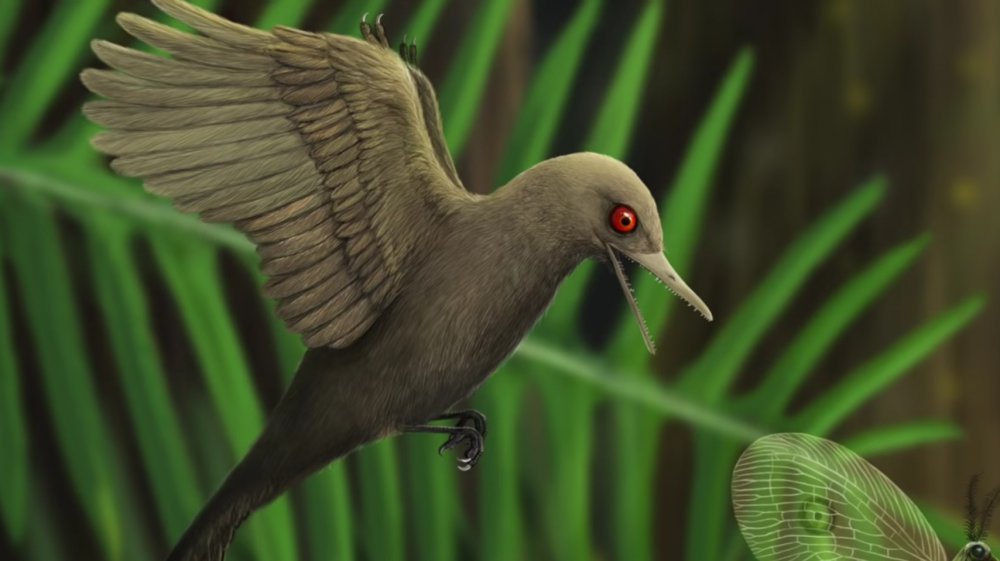Ancient 'Hummingbird' Dinosaur Fossil Discovered In Amber
It often feels like modern animals stand on the shoulders of Jurassic giants, not because dinosaurs discovered gravity when an asteroid fell on their head like Newton's apple, but because many prehistoric beasts seem like much larger versions of their evolutionary descendants. Granted, snakes don't stand on giant shoulders because they don't have shoulders and can't stand on anything due to lack of legs. But even with those technicalities, the largest snake ever to not-walk the Earth was the roughly bus-length Titanoboa. Similarly, the BBC writes of an ancient crocodile dubbed Machimosaurus rex, which badass-ly translates to "fighting lizard-king."
Of course, aside from Jim Morrison, no lizard king looms larger in pop culture as an emblem of the gigantic past than the Tyrannosaurus rex. Its perceived supremacy is built into its name, which means "king of the tyrant lizards," via Live Science. These 9-ton terrors were theropods, the evolutionary forebears of birds, per the Australian Broadcasting Corporation. So it might be hard to imagine these Jurassic legends lording over Earth alongside dinosaurs the size of small hummingbirds. Luckily, you don't have to imagine because scientists have unearthed physical proof.
Float like a hummingbird, bite like a lizard
The Australian Broadcasting Corporation reports that in 2016, a 99-million-year-old skull from the conflict-ridden northern region of Myanmar was donated to China's Hupoge Amber Museum. This hunk of prehistory stood out for its diminutive size. Paleontologist Luis Chiappe, who co-authored a paper in Nature about the find, said the amber-entombed dinosaur fossil "is so small that there's nothing like that in the lithic [rock] record."
That strikingly tiny skull belonged to hitherto unknown "eyetooth bird," Oculudentavis khaungraae. With a brain case measuring just a feather over 7 millimeters, the dinosaur was likely about as big as a modern-day bee hummingbird, the world's smallest known bird species. Equipped with big eye sockets and a beak lined with teeth, this itty-bitty beast likely feasted on insects. Its bite-sized stature may have resulted from a phenomenon known as miniaturization, which often occurs with species isolated on islands. But other elements of the skull are harder to explain. Its structure doesn't resemble current-day birds or the theropods of the past from which birds evolved. In that sense, Oculudentavis khaungraae is a biological anomaly that may change how experts view bird evolution.

